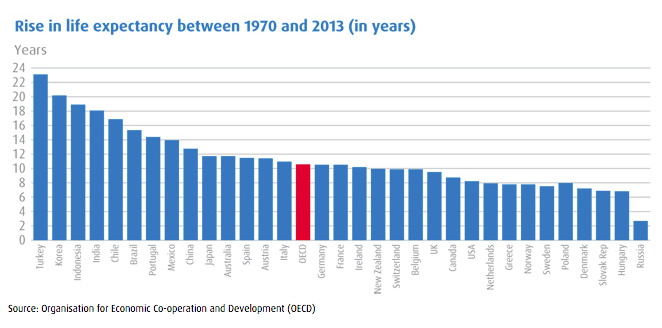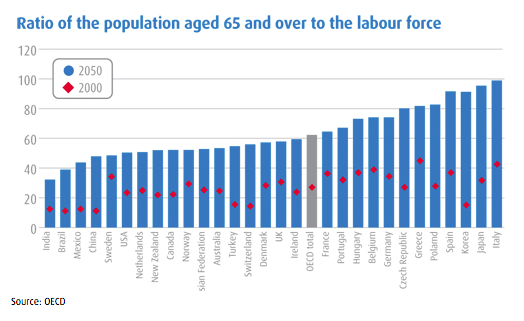The facts are simple — the birth rate is dropping everywhere, work-force growth is dramatically slowing (to negative in many countries), the median age is rising and people are living longer. The repercussions are immense. Pension and social security systems are inadequate, health care and retirement facilities ditto and government budgetary forecasts are not worth the paper they are written on due to slowing GDP growth.
Economic growth is made up of the expansion in output per employed person (productivity) and the rate of growth of employed people. If the latter is steadily in decline then the potential rate of economic growth declines. And that is the pickle in which the world finds itself.
Pictures are better than words. Take a look at what has happened to average life expectancy in the relatively short period from 1970 to 2013.

It is remarkable that in many advanced economies, where life expectancy was already relatively high, it has increased by around 10 years over the period illustrated. In developing economies the increase tends to be higher. Whilst we should applaud the improvements in health care, diet and lifestyle that have permitted this trend to longevity we need to recognise that back in the 1970s this was not anticipated and not embraced in forward planning. Governments and others have been playing a game of catch-up ever since.
In 1950 the world’s average life expectancy was 46.8. Today, it is 70.5. The world’s median age was 23.5 in 1950, 22.5 in 1980 and 29.6 in 2015. In the advanced countries the median age has risen from 28.5 in 1950, to 31.9 in 1980 and 41.2 in 2015. Almost inevitably, Japan tops the median age list at 46.5, hotly followed by Germany at 46.2 and Italy at 45.9 (UN data).









